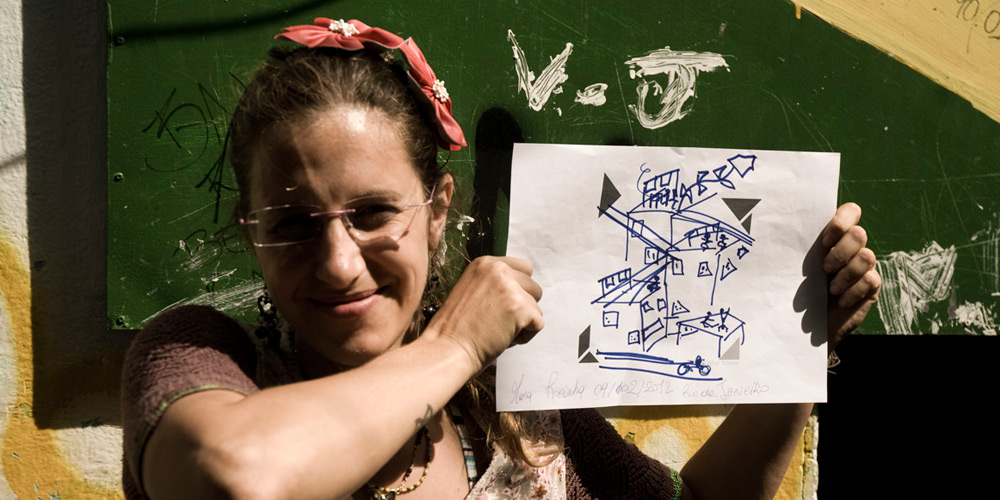This is the student blog documenting the master’s field trip to Brazil to continue work on the Rio Floods Petropolis Sports-for-Change project in Brazil, in collaboration with Architecture for Humanity. Click here for the entire series.
————————————
Eight o’clock: Four taxis are waiting downstairs to drive us to the UN-HABITAT compound. Through the windshields, we take in one last time the immensity of the city’s architecture. Sadly, it’s our last day in Rio.
The man waiting for us is Erik Vitturp Christensen, Senior Officer of UN-HABITAT’s Human Settlements.
Meeting with Erik Vitturp Christensen, senior officer of Human Settlements
Harmonious urbanization
Friendly from the start and with cigarette in hand, he proudly shows us the beauty of his office set amidst the lush vegetation. Erik explains the new thematic branches and units of the organization. Through a multidisciplinary approach they fulfill a strategy to bridge urban divides, and Rio is an important challenge in that matter. Even just a few days in this city are enough to grasp that. Erik explains that the economic boom experienced by Brazil over the the last few years should be employed in assessing urban problems and promoting social change.
UN-HABITAT acts in this context through several interventions of urban acupuncture, taking into account the local legislation, economy, resources and environment. A sustainable approach is the only way towards harmonious urbanization, and to create cities that are able to grow and regenerate on their own.
Listening to him and to what the organization has been doing tempts us to stay longer or at least to come back very soon.
“Draw your house”
Our student group comes up with the idea of “Draw your house”, an experiment that consists in collecting drawings from ordinary people who we ask to draw their own house, with the aim of observing how people perceive the architecture of their homes throughout different cultural contexts. This experiment takes advantage of the particular structure of our study program that will soon see our group flung across different parts of the world during our internships. It is our way of establishing a common process that we can use to link our present and future experiences, both during and beyond our masters course.
 Mara of Il Sorriso Dei Miei Bimbi, who we met yesterday in Rocinha, took part in our project sending us a drawing of her house.
Mara of Il Sorriso Dei Miei Bimbi, who we met yesterday in Rocinha, took part in our project sending us a drawing of her house.
Rediscovering Itaipava
Some time later, Nathaniel Corum, our workshop leader and head of educational outreach for Architecture for Humanity, arrives from a 20-hour flight to meet us. With him, reinforcements: Màrcia, social development professional and Alix, program coordinator of Architecture for Humanity. They will take us to our site, Itaipava, location of our recent three-week workshop in Barcelona.
Itaipava, a small village close to Petropolis, belongs to one of the municipalities most affected by floods and mudslides that hit in January 2011, constituting Brazil’s largest ever natural disaster. Nevertheless, the climate-induced disaster was a preventable one, exacerbated by unplanned and irregular urbanization, mountain deforestation and building in risk-prone areas.
In this framework, the aim of our collaboration will be the design of a sports court that takes into account the complex circumstances of the area and rediscovers the potential of this well-known place not only as a physical space to complement the reconstructed housing units, but moreover as motor for community integration and recovery.
Although Google Earth had allowed us to have a notion of the site before our arrival, there is only so much a virtual reconnaissance can tell you. Emotion, culture and context are key to even begin understanding the implications of a project like this one. So here we are, to fill that gap between virtual and reality.
 Middle left: Nathaniel Corum and Alix Ogilvie of Architecture for Humanity
Middle left: Nathaniel Corum and Alix Ogilvie of Architecture for Humanity

